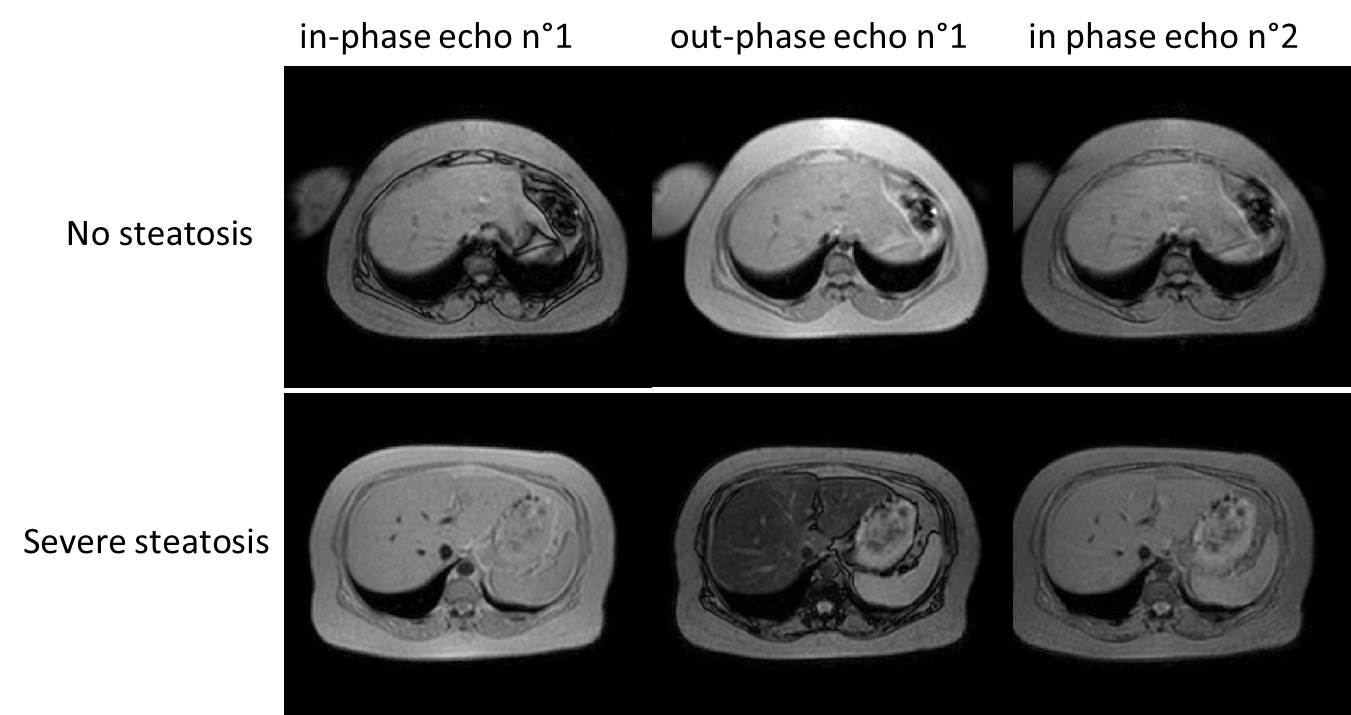|
Steatohepatitis
Steatohepatitis is a type of fatty liver disease, characterized by inflammation of the liver with concurrent fat accumulation in liver. Mere deposition of fat in the liver is termed steatosis, and together these constitute fatty liver changes. There are two main types of fatty liver disease: alcohol-related fatty liver disease and non-alcoholic fatty liver disease (NAFLD). Risk factors for NAFLD include diabetes, obesity and metabolic syndrome. When inflammation is present it is referred to as alcoholic steatohepatitis and nonalcoholic steatohepatitis (NASH). Steatohepatitis of either cause may progress to cirrhosis, and NASH is now believed to be a frequent cause of unexplained cirrhosis (at least in Western societies). NASH is also associated with lysosomal acid lipase deficiency. The word is from ''steato-'', meaning "fat" and ''hepatitis'', meaning "inflammation of the liver". Alcoholic steatohepatitis Chronic alcohol intake commonly causes steatohepatitis. Non-alcohol ... [...More Info...] [...Related Items...] OR: [Wikipedia] [Google] [Baidu] |
Hepatitis
Hepatitis is inflammation of the liver parenchyma, liver tissue. Some people or animals with hepatitis have no symptoms, whereas others develop yellow discoloration of the skin and whites of the eyes (jaundice), Anorexia (symptom), poor appetite, vomiting, fatigue (medicine), tiredness, abdominal pain, and diarrhea. Hepatitis is ''acute (medicine), acute'' if it resolves within six months, and ''chronic condition, chronic'' if it lasts longer than six months. Acute hepatitis can self-limiting (biology), resolve on its own, progress to chronic hepatitis, or (rarely) result in acute liver failure. Chronic hepatitis may progress to scarring of the liver (cirrhosis), liver failure, and liver cancer. Hepatitis is most commonly caused by the virus ''hepatovirus A'', ''hepatitis B virus, B'', ''hepatitis C virus, C'', ''hepatitis D virus, D'', and ''hepatitis E virus, E''. Other Viral hepatitis, viruses can also cause liver inflammation, including cytomegalovirus, Epstein–Barr virus, ... [...More Info...] [...Related Items...] OR: [Wikipedia] [Google] [Baidu] |
Fatty Liver Disease
Fatty liver disease (FLD), also known as hepatic steatosis, is a condition where excess fat builds up in the liver. Often there are no or few symptoms. Occasionally there may be tiredness or pain in the upper right side of the abdomen. Complications may include cirrhosis, liver cancer, and esophageal varices. There are two types of fatty liver disease: non-alcoholic fatty liver disease (NAFLD) and alcoholic liver disease. NAFLD is made up of simple fatty liver and non-alcoholic steatohepatitis (NASH). The primary risks include alcohol, type 2 diabetes, and obesity. Other risk factors include certain medications such as glucocorticoids, and hepatitis C. It is unclear why some people with NAFLD develop simple fatty liver and others develop NASH. Diagnosis is based on the medical history supported by blood tests, medical imaging, and occasionally liver biopsy. Treatment of NAFLD is generally by dietary changes and exercise to bring about weight loss. In those who are severel ... [...More Info...] [...Related Items...] OR: [Wikipedia] [Google] [Baidu] |
Nonalcoholic Steatohepatitis
Non-alcoholic fatty liver disease (NAFLD), also known as metabolic (dysfunction) associated fatty liver disease (MAFLD), is excessive fat build-up in the liver without another clear cause such as alcohol use. There are two types; non-alcoholic fatty liver (NAFL) and non-alcoholic steatohepatitis (NASH), with the latter also including liver inflammation. Non-alcoholic fatty liver is less dangerous than NASH and usually does not progress to NASH. When NAFL does progress to NASH, it may eventually lead to complications such as cirrhosis, liver cancer, liver failure, or cardiovascular disease. Obesity and type 2 diabetes are strong risk factors for NAFLD. Other risks include being overweight, metabolic syndrome (defined as at least three of the five following medical conditions: abdominal obesity, high blood pressure, high blood sugar, high serum triglycerides, and low serum HDL cholesterol), a diet high in fructose, and older age. NAFLD and alcoholic liver disease are types of f ... [...More Info...] [...Related Items...] OR: [Wikipedia] [Google] [Baidu] |
Non-alcoholic Fatty Liver Disease
Non-alcoholic fatty liver disease (NAFLD), also known as metabolic (dysfunction) associated fatty liver disease (MAFLD), is excessive fat build-up in the liver without another clear cause such as alcohol use. There are two types; non-alcoholic fatty liver (NAFL) and non-alcoholic steatohepatitis (NASH), with the latter also including liver inflammation. Non-alcoholic fatty liver is less dangerous than NASH and usually does not progress to NASH. When NAFL does progress to NASH, it may eventually lead to complications such as cirrhosis, liver cancer, liver failure, or cardiovascular disease. Obesity and type 2 diabetes are strong risk factors for NAFLD. Other risks include being overweight, metabolic syndrome (defined as at least three of the five following medical conditions: abdominal obesity, high blood pressure, high blood sugar, high serum triglycerides, and low serum HDL cholesterol), a diet high in fructose, and older age. NAFLD and alcoholic liver disease are types ... [...More Info...] [...Related Items...] OR: [Wikipedia] [Google] [Baidu] |
Cirrhosis
Cirrhosis, also known as liver cirrhosis or hepatic cirrhosis, and end-stage liver disease, is the impaired liver function caused by the formation of scar tissue known as fibrosis due to damage caused by liver disease. Damage causes tissue repair and subsequent formation of scar tissue, which over time can replace normal parenchyma, functioning tissue, leading to the impaired liver function of cirrhosis. The disease typically develops slowly over months or years. Early symptoms may include Fatigue (medicine), tiredness, Asthenia, weakness, Anorexia (symptom), loss of appetite, weight loss, unexplained weight loss, nausea and vomiting, and discomfort in the right upper quadrant of the abdomen. As the disease worsens, symptoms may include Pruritus, itchiness, peripheral edema, swelling in the lower legs, ascites, fluid build-up in the abdomen, jaundice, coagulopathy, bruising easily, and the development of spider angioma, spider-like blood vessels in the skin. The fluid build-up in ... [...More Info...] [...Related Items...] OR: [Wikipedia] [Google] [Baidu] |
Elafibranor
Elafibranor (INN, code name GFT505) is an experimental medication that is being studied and developed by Genfit for the treatment of cardiometabolic diseases including diabetes, insulin resistance, dyslipidemia, and non-alcoholic fatty liver disease (NAFLD). Elafibranor is a dual PPARα/δ agonist. See also * MBX-8025 * Resveratrol * Telmisartan Telmisartan, sold under the brand name Micardis among others, is a medication used to treat high blood pressure, heart failure, and diabetic kidney disease. It is a reasonable initial treatment for high blood pressure. It is taken by mouth. V ... References External links Genfit PharmaceuticalNashBiotechs Several articles on drug candidates in NASH PPAR agonists Experimental drugs Orphan drugs {{gastrointestinal-drug-stub ... [...More Info...] [...Related Items...] OR: [Wikipedia] [Google] [Baidu] |
Aramchol
Aramchol is an investigational drug being developed by Galmed Pharmaceuticals as a first-in-class, potentially disease modifying treatment for nonalcoholic steatohepatitis, or NASH, a more advanced condition of non-alcoholic fatty liver disease. Aramchol, a conjugate of cholic acid and arachidic acid, is a member of a synthetic fatty-acid/bile-acid conjugate (FABAC). FABACs are composed of endogenous compounds, orally administrated with potentially good safety and tolerability parameters. Aramchol affects liver fat metabolism and has been shown in a Phase IIa clinical study to significantly reduce liver fat content as well as improve metabolic parameters associated with fatty liver disease. Furthermore, it has been shown to be safe for use, and with no severe adverse effects. Aramchol was initially intended to combine a cholesterol solubilizing moiety (a saturated fatty acid) with a bile acid (cholic acid) acting as a vehicle to enable secretion into bile and entry into the ent ... [...More Info...] [...Related Items...] OR: [Wikipedia] [Google] [Baidu] |
Steatosis
Steatosis, also called fatty change, is abnormal retention of fat ( lipids) within a cell or organ. Steatosis most often affects the liver – the primary organ of lipid metabolism – where the condition is commonly referred to as fatty liver disease. Steatosis can also occur in other organs, including the kidneys, heart, and muscle. When the term is not further specified (as, for example, in 'cardiac steatosis'), it is assumed to refer to the liver. Risk factors associated with steatosis are varied, and may include diabetes mellitus, protein malnutrition, hypertension, cell toxins, obesity, anoxia, and sleep apnea. Steatosis reflects an impairment of the normal processes of synthesis and elimination of triglyceride fat. Excess lipid accumulates in vesicles that displace the cytoplasm. When the vesicles are large enough to distort the nucleus, the condition is known as macrovesicular steatosis; otherwise, the condition is known as microvesicular steatosis. While not ... [...More Info...] [...Related Items...] OR: [Wikipedia] [Google] [Baidu] |
Chronic Liver Disease
Chronic liver disease in the clinical context is a disease process of the liver that involves a process of progressive destruction and regeneration of the liver parenchyma leading to fibrosis and cirrhosis. "Chronic liver disease" refers to disease of the liver which lasts over a period of six months. It consists of a wide range of liver pathologies which include inflammation ( chronic hepatitis), liver cirrhosis, and hepatocellular carcinoma. The entire spectrum need not be experienced. Signs and symptoms Signs of chronic liver disease detectable on clinical examination can be divided into those that are associated with the diagnosis of chronic liver disease, associated with decompensation, and associated with the cause. Chronic liver disease * Nail clubbing * Palmar erythema * Spider nevi (angiomata) * Gynaecomastia * Feminising hair distribution * Testicular atrophy * Small irregular shrunken liver * Anaemia * Caput medusae Decompensation * Drowsiness (encephalopathy) * ... [...More Info...] [...Related Items...] OR: [Wikipedia] [Google] [Baidu] |
Mayo Clinic
The Mayo Clinic () is a nonprofit American academic medical center focused on integrated health care, education, and research Research is "creative and systematic work undertaken to increase the stock of knowledge". It involves the collection, organization and analysis of evidence to increase understanding of a topic, characterized by a particular attentiveness t .... It employs over 4,500 physicians and scientists, along with another 58,400 administrative and allied health staff, across three major campuses: Rochester, Minnesota; Jacksonville, Florida; and Phoenix, Arizona, Phoenix/Scottsdale, Arizona. The practice specializes in treating difficult cases through Health care#Tertiary care, tertiary care and Medical tourism#United States, destination medicine. It is home to the top-15 ranked Mayo Clinic Alix School of Medicine in addition to many of the highest regarded residency education programs in the United States. It spends over $660 million a year on research an ... [...More Info...] [...Related Items...] OR: [Wikipedia] [Google] [Baidu] |





